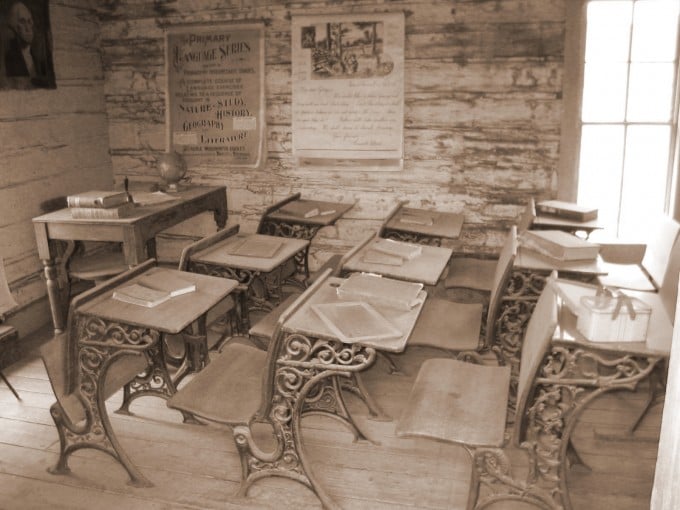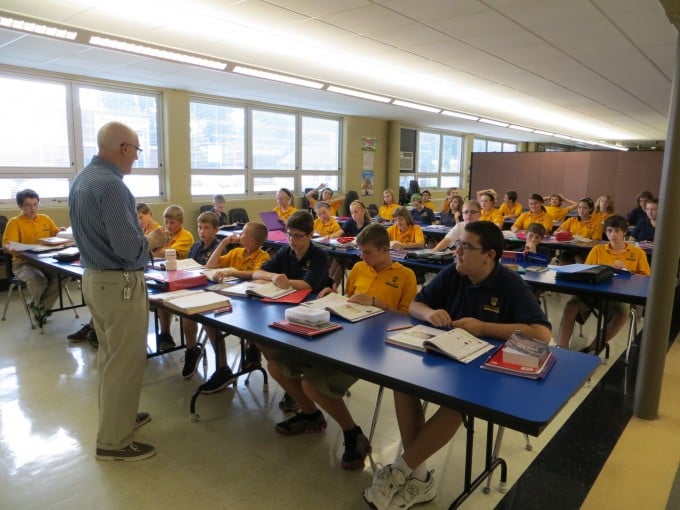5 Key Differences Between Working at A Private, Public, or Charter School
Market: Education

One of the only things harder than becoming a teacher is, deciding which direction you want to take your career. Becoming successful at teaching is mostly based upon your ability, but another large percent of what determines a successful career is the type of school. Do you go the traditional route and teach at a public school? Or, perhaps, you want to do something different and teach at a charter school?
It’s a difficult decision to make and frankly, there isn’t a lot of information out there to help you decide. Luckily, for you we’ve got your back. Here are the 5 key differences between working at a public, private, and charter schools.
Pay – When working at a charter school, on average, you are more likely to get paid less than the private or public school teachers. Because charter schools are run by for-profit companies, there is little incentive to pay teachers more than absolutely have to. Also, there is a culture of encouraging a high turnover rate to “keep things fresh.” Although in reality it just makes it easier for schools to offer lower wages and benefits. Furthermore, many charter schools discourage or ban unions, making collective bargaining for higher wages essentially impossible.
Private schools often pay better than charter schools as well as offer benefits that are more competitive. However, private school teachers still, on average, make less than their public school counterparts do. It may sound odd that private school teachers make less than public school teachers do, but really, it’s just a simple matter of Economics 101. Basically, the main reason private school teachers get paid less is that there is less of a demand for private school teachers than public schools; lower demand = lower pay. It might be surprising, but out of public, private, and charter schools, public school teachers make the most.
To understand why public school teachers make the most, you must understand the underlying factors. Essentially public school teachers have better collective bargaining rights through the teachers union. Schools receive more funding via the government and charitable donations. There is a greater demand for public school teachers, and overall teachers generally benefit under the non-profit model.
Class Size – 9 times out of 10 private schools will have the smallest class size. Private schools are under no obligation to accept a student and only accept as many as they can teach. Like private schools, charter schools will have smaller class sizes than public schools; but because Charter schools are not about exclusivity, they are more likely to have larger classes than private schools. Public schools, of course, have the largest classrooms as the area determines its students rather than by need.
Students and Parents – As a teacher in a private school, you are more likely to have a more homogenous group of students than in either a public or a charter school. Most private schools have a long and arduous application process and selection is not guaranteed.
Due to the high cost of private schools, your students will mostly come from families higher on the socioeconomic ladder. While it may seem rough, the prohibitively high cost and the intense application process increases the weight of investment and drastically reduces the number of un-involved students and parents. Like private schools, charter schools rely on the application process to get their students. However, most charter schools only do one or two interviews and there are no tuition fees. Charter school teachers should expect a more diverse classroom. Because most charter schools were created to address failing districts, expect more involved parents but not necessarily more involved students.
Working in a public school, you will have very little idea of what kind of students you will have from one year to the next. The only real determining factor in your classroom is what school district you teach in and what neighborhood the school is closest to.
Administrative Support – Because charter schools and private schools are privately run, teachers enjoy a greater amount of decision than public school teachers do. As a public school teacher, you are bound by the school board, the teachers union, and all levels of government. What you teach will more or less be laid out for you from year to year. It’s up to you to mold your style to the standards.
 Teaching opportunities – On the whole, you will find fewer charter school opportunities than you will with other forms of education. Private schools are slightly more plentiful than charter schools, but still, you’re likely to find fewer opportunities than public schools. As far as teaching opportunities go, public schools have the most diverse and plentiful options available. You can go to any state in the union and comparatively have a far better chance of finding employment.
Teaching opportunities – On the whole, you will find fewer charter school opportunities than you will with other forms of education. Private schools are slightly more plentiful than charter schools, but still, you’re likely to find fewer opportunities than public schools. As far as teaching opportunities go, public schools have the most diverse and plentiful options available. You can go to any state in the union and comparatively have a far better chance of finding employment.
As you can see, there advantages and disadvantages to each school style. Ultimately, when deciding public, private, or charter school, you have to think about what you want in the long run. Ask yourself what you want out life and then look back over and compare the variables. Add up the positives and the negatives and see which one comes out on top for you. In the end, as long as you work hard, do your best and give your all to your students, you will have a successful career regardless of where you go.